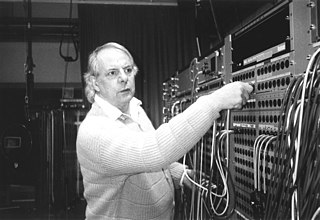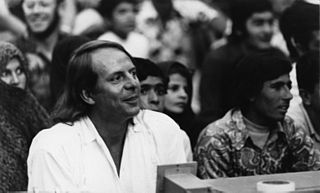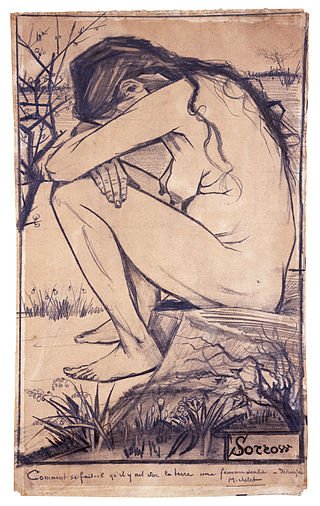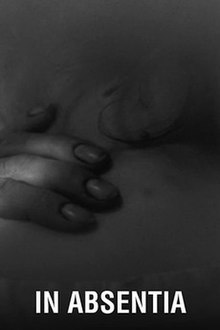
Karlheinz Stockhausen was a German composer, widely acknowledged by critics as one of the most important but also controversial composers of the 20th and early 21st centuries. He is known for his groundbreaking work in electronic music, for introducing controlled chance into serial composition, and for musical spatialization.

Natacha Atlas is an Egyptian-Belgian singer known for her fusion of Arabic and Western music, particularly hip-hop. She once termed her music "cha'abi moderne". Her music has been influenced by many styles including Maghrebain, hip hop, drum and bass and reggae.

Stephen and Timothy Quay are American identical twin brothers and stop-motion animators who are better known as the Brothers Quay or Quay Brothers. They received the 1998 Drama Desk Award for Outstanding Set Design for their work on the play The Chairs.

Hideko Takamine was a Japanese actress who began as a child actress and maintained her fame in a career that spanned 50 years. She is particularly known for her collaborations with directors Mikio Naruse and Keisuke Kinoshita, with Twenty-Four Eyes (1954) and Floating Clouds (1955) being among her most noted films.

Momente (Moments) is a work by the German composer Karlheinz Stockhausen, written between 1962 and 1969, scored for solo soprano, four mixed choirs, and thirteen instrumentalists. A "cantata with radiophonic and theatrical overtones", it is described by the composer as "practically an opera of Mother Earth surrounded by her chicks". It was Stockhausen's first piece composed on principles of modular transposability, and his first musical form to be determined from categories of sensation or perception rather than by numerical units of musical terminology, which marks a significant change in the composer's musical approach from the abstract forms of the 1950s.

Aus den sieben Tagen is a collection of 15 text compositions by Karlheinz Stockhausen, composed in May 1968, in reaction to a personal crisis, and characterized as "Intuitive music"—music produced primarily from the intuition rather than the intellect of the performer(s). It is Work Number 26 in the composer's catalog of works.

Mikrophonie is the title given by Karlheinz Stockhausen to two of his compositions, written in 1964 and 1965, in which "normally inaudible vibrations ... are made audible by an active process of sound detection ; the microphone is used actively as a musical instrument, in contrast to its former passive function of reproducing sounds as faithfully as possible".

Mary Hildegard Ruth Bauermeister was a German artist who worked in sculpture, drawing, installation, performance, and music. Influenced by Fluxus artists and Nouveau Réalisme, her work addresses esoteric issues of how information is transferable through society. "I only followed an inner drive to express what was not yet there, in reality or thought", she said of her practice. "To make art was more a finding, searching process than a knowing." Beginning in the 1970s, her work concentrated on the themes surrounding New Age spirituality, specifically geomancy, the divine interpretation of lines on the ground.

Aloys and AlfonsKontarsky were German duo-pianist brothers who were associated with a number of important world premieres of contemporary works. They had an international reputation for performing modern music for two pianists, although they also performed the standard repertoire and they sometimes played separately. They were occasionally joined by their younger brother Bernhard in performances of pieces for three pianos. After suffering a stroke in 1983, Aloys retired from performing.

Freitag aus Licht, the main body of which is also titled Freitag-Versuchung, is the fifth to be composed of the seven operas that comprise Licht (Light), by Karlheinz Stockhausen. It was the last of the operas to receive a staged production with the composer's involvement.

Alphabet für Liège, for soloists and duos, is a composition by Karlheinz Stockhausen, and is Work Number 36 in the composer's catalog of works. A performance of it lasts four hours.

Kathinka Pasveer is a Dutch flautist.

In Freundschaft is a composition by Karlheinz Stockhausen, number 46 in his catalogue of works. It is a serial composition for a solo instrument, first for clarinet, and later arranged by the composer for many other instruments, often in friendship to specific performers.

Samstag aus Licht is an opera by Karlheinz Stockhausen in a greeting and four scenes, and was the second of seven to be composed for the opera cycle Licht: die sieben Tage der Woche. It was written between 1981 and 1983, to a libretto written by the composer and incorporating a text by Saint Francis of Assisi, and was first staged in Milan in 1984.

Donnerstag aus Licht is an opera by Karlheinz Stockhausen in a greeting, three acts, and a farewell, and was the first of seven to be composed for the opera cycle Licht: die sieben Tage der Woche. It was written between 1977 and 1980, with a libretto by the composer.

Vincent van Gogh drew and painted a series of works of his mistress Sien during their time together in the Netherlands. In particular, his drawing Sorrow is widely acknowledged as a masterwork of draftsmanship, the culmination of a long and sometimes uncertain apprenticeship in learning his craft.

Fresco is an orchestral composition written in 1969 by the German composer Karlheinz Stockhausen as foyer music for an evening-long retrospective programme of his music presented simultaneously in three auditoriums of the Beethovenhalle in Bonn. It is Nr. 29 in his catalogue of works, and a performance takes about five hours.

Jill Purce is a British voice teacher, Family Constellations therapist, and author. In the 1970s, Purce developed a new way of working with the voice, introducing the teaching of group overtone chanting, producing a single note whilst amplifying vocal harmonics. She is a former fellow of King's College London, Biophysics Department. She produced over 30 books as general editor of the Thames and Hudson Art and Imagination series. Between 1971 and 1974, she worked in Germany with the composer Karlheinz Stockhausen. Since the early 1970s, she has taught diverse forms of contemplative chant, especially overtone chanting. For over 15 years, she has been leading Family Constellations combined with chant.

Musik für ein Haus is a group-composition project devised by Karlheinz Stockhausen for the 1968 Darmstädter Ferienkurse. Fourteen composers and twelve instrumentalists participated, with the resulting performance lasting four hours. It was not regarded by Stockhausen as a composition belonging solely to himself, and therefore was not assigned a number in his catalog of works.

Emma Hauck was a German outsider artist known for her artistic, handwritten letters to her husband while she was institutionalized in a mental hospital. Though these letters were never delivered, they have since come to be regarded as works of art due to their abstraction and repetitive content. In many cases the letters consist of only the words "Come sweetheart" or "Come" written over and over in flowing script.



















